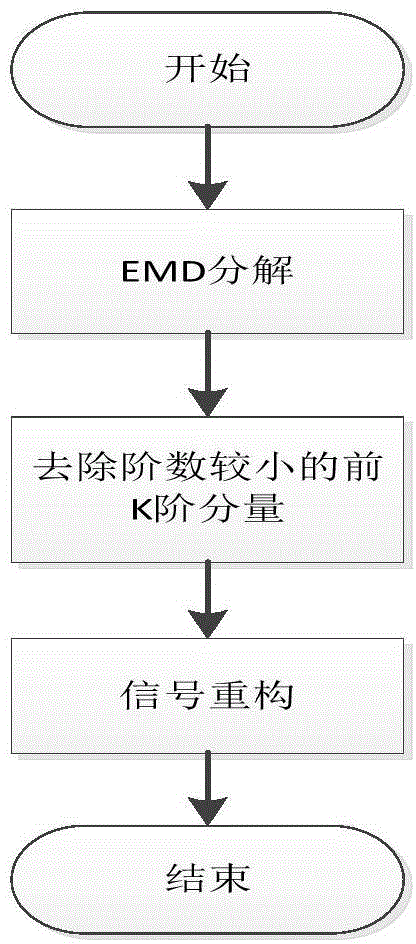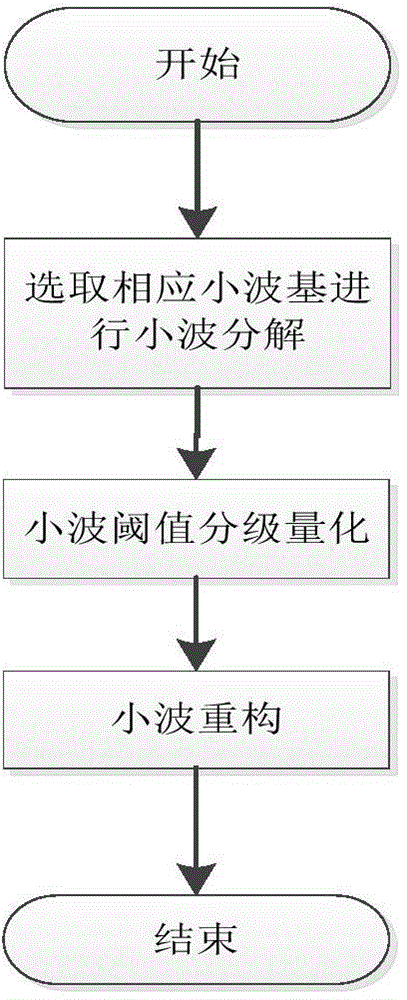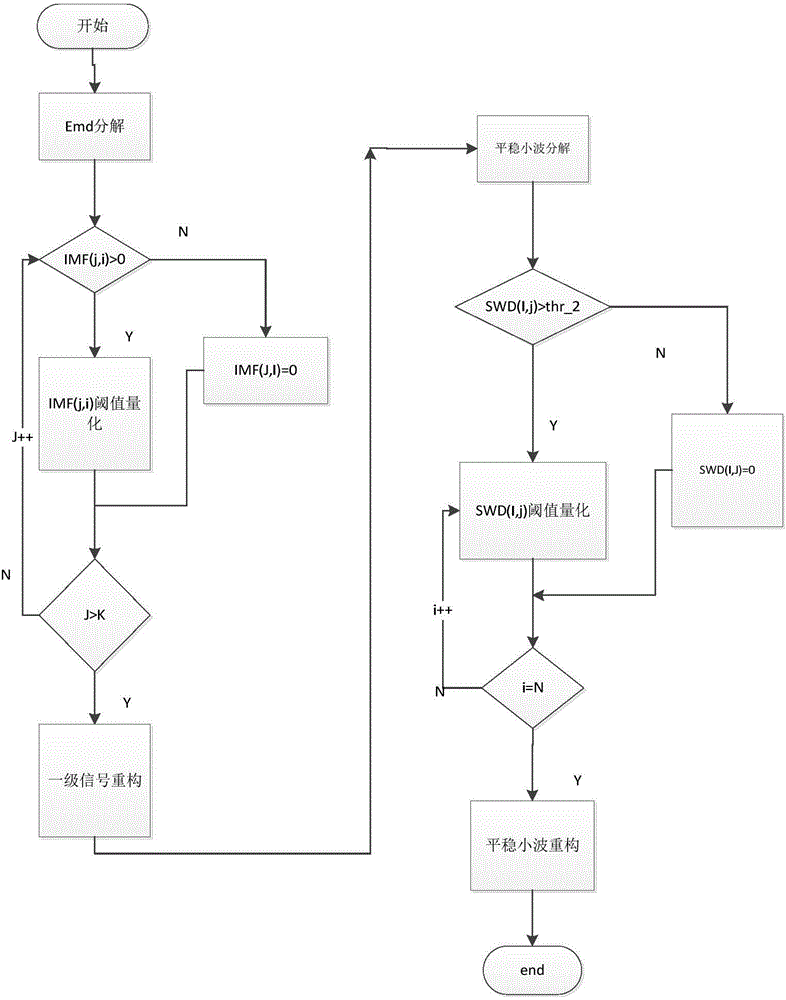Signal combined denoising method based on empirical mode decomposition (EMD) and wavelet analysis
A technology of empirical mode decomposition and wavelet analysis, applied in the field of signal processing, can solve the problems of poor denoising performance and achieve the effect of excellent denoising performance
- Summary
- Abstract
- Description
- Claims
- Application Information
AI Technical Summary
Problems solved by technology
Method used
Image
Examples
Embodiment Construction
[0036] The technical solution of the present invention will be described in detail below in combination with the embodiments and the accompanying drawings.
[0037] In this embodiment, the square wave provided in the matlab simulation system is used as an example for simulation, Gaussian white noise is added, and the signal-to-noise ratio is -9db. The operating system of the simulation platform is windows2007, which is compiled by matlab.
[0038] Step A, performing EMD decomposition on the received signal, wherein, the number of decomposition layers is m=9.
[0039] Step B. Calculating autocorrelation for the IMF components at all levels, and using the autocorrelation boundary point selection method to obtain the noise boundary point K, where K=4.
[0040] Step C. According to IMF 1 ~IMF KPerform threshold quantification. For IMF j , the threshold value is given by the following formula Among them, the median function is the absolute median value of the jth IMF compone...
PUM
 Login to View More
Login to View More Abstract
Description
Claims
Application Information
 Login to View More
Login to View More - R&D
- Intellectual Property
- Life Sciences
- Materials
- Tech Scout
- Unparalleled Data Quality
- Higher Quality Content
- 60% Fewer Hallucinations
Browse by: Latest US Patents, China's latest patents, Technical Efficacy Thesaurus, Application Domain, Technology Topic, Popular Technical Reports.
© 2025 PatSnap. All rights reserved.Legal|Privacy policy|Modern Slavery Act Transparency Statement|Sitemap|About US| Contact US: help@patsnap.com



